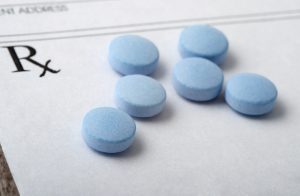 With increasing frequency, stories of opioid overdoses are making headlines, with tragedies striking people from all walks of life. The Centers for Disease Control and Prevention declares that the United States is in the midst of an opioid overdose epidemic, and says that every day, over 1,000 people are treated in emergency departments for misusing prescription opioids.
With increasing frequency, stories of opioid overdoses are making headlines, with tragedies striking people from all walks of life. The Centers for Disease Control and Prevention declares that the United States is in the midst of an opioid overdose epidemic, and says that every day, over 1,000 people are treated in emergency departments for misusing prescription opioids.
Amid the growing epidemic of opioid abuse among adults, parents are increasingly showing concern when their teens are prescribed opioids after procedures such as wisdom tooth removal or surgery for a sports injury. Dr. Gary Walco, director of Pain Medicine at Seattle Children’s, helps parents and teens understand the important role that opioids can play in managing pain, and also teaches healthcare providers in training about the importance of safe prescribing practices.
“Pain relief after a surgical procedure makes teens more comfortable, increases activity and strength, and promotes healing,” said Walco. “We need to treat pain appropriately and we also need to be mindful that we could be putting substances out there where they can be misused.”
What are prescription opioids?
Prescription opioids are powerful medicines that relieve pain by blocking the transmission of some pain messages in the brain and spinal cord. They can also provide feelings of euphoria to those who take them, making them a candidate for misuse or abuse by people who are looking for a high. Chronic use or misuse can lead to physical dependence and addiction, whereas using opioids exactly as prescribed may be an effective way to treat pain.
Oxycodone, morphine and Vicodin are just some of the names of opioids. Most often, they come in the form of tablets, capsules or liquids, and some are combined with other substances, such as acetaminophen.
Risk of misuse and abuse by teens
The number of prescription opioids sold to adults in the U.S. quadrupled between 1999 and 2013, and over that same time, adult deaths from prescription opioids also quadrupled.
With an increased supply of opioids in homes, prescription medicines became more commonly misused by teens. Misuse includes taking someone else’s medicine, taking your own medicine for reasons other than treating pain, mixing a medicine with alcohol or other drugs, or taking it in any other way that was not intended by the prescriber.
“A fundamental problem is poor education about pain treatment among prescribers,” Walco said. “Historically, medical school curriculum had very little on pain and much of the material was in the context of pharmacology, highlighting the role of opioids. As a consequence, these drugs are often prescribed inappropriately, such as for chronic pain problems that are unlikely to respond to this treatment. Fortunately the harmful effects of these practices appear to have been far less significant in children and adolescents than in adults, but one must continue to be mindful.”
A recent study published in Pediatrics found that a group of adolescents who took opioids for non-medical use were first introduced to opioids through prescriptions for medical use. The good news is that according to the National Institute on Drug Abuse, teen use of prescription opioids is trending downwards. It seems that prevention efforts, guidelines for careful prescribing and other policy changes have reduced availability, resulting in less teen prescription drug misuse.
Preventing opioid misuse and abuse
Healthcare providers, patients and families all have a role in preventing opioid misuse. Walco shared these tips for preventing non-medical opioid use:
- When opioids are the best treatment for managing pain, doctors need to prescribe the appropriate amount.
- When opioids are prescribed, patients and families must receive education on proper use and the expected length of use.
- Parents should be in charge of giving each dose to their teen and should track the doses given on a log.
- Keep opioids up and out of the reach of young children.
- Lock them up in between dosing if someone in the home has a history of misuse, signs of depression or other risk for misuse.
- Promptly return leftover medicine to a take-back location. Overwhelmingly teens who engage in non-medical use of prescription opioids say that they acquire them (given, bought or taken) from others’ medicine chests, friends or relatives.
- Engage children and teens in conversations about the dangers of non-medical use of prescription and over-the-counter medicines, along with alcohol and other drugs.
“We have a problem with substance abuse in our country,” Walco said. “Teens experiment, opioids are overprescribed and are rarely properly disposed of. We need to do more to curb the problem of opioid misuse while also providing for the pain treatment needs of patients.”

